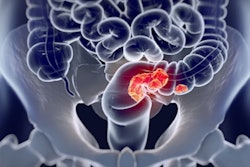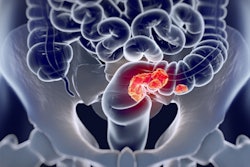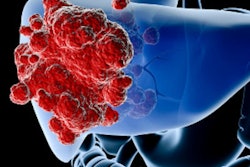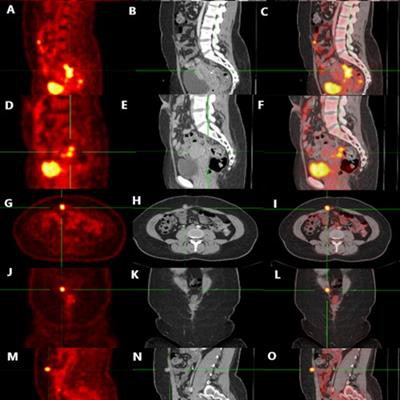
F-18 FDG-PET/CT imaging can detect treatment response in patients with metastatic colorectal cancer (CRC), potentially having a significant impact in how they are managed, according to a group in Egypt.
Researchers led by Dr. Ibrahim Mansour Nasr of Zagazig University in Zagazig analyzed F-18 FDG PET/CT scans before and one to six months after patients began chemotherapy treatment. The scans showed which patients were responding versus those whose disease was progressing, they found.
"F-18 FDG PET/CT can be added as a valuable imaging method for identifying responders and non-responders among [oligometastatic colorectal cancer] patients," Nasr and colleagues wrote. The study was published February 9 in the Egyptian Journal of Radiology and Nuclear Medicine.
Colorectal cancer is one of the most widespread cancers worldwide and is responsible for roughly half a million deaths yearly. Monitoring treatment response in these patients is typically carried out by CT, with the use of PET adopted in guidelines in 2021.
Yet there remains a scarcity of studies of the use of F-18 FDG-PET/CT in these patients, despite metabolic imaging being "an exquisite method" over CT for the early assessment of tumoral response, the authors wrote.
To further investigate the potential role of FDG-PET/CT in these cases, Nasr and colleagues analyzed results in a group of 79 patients who had scans before and up to six months after chemotherapy treatment at their hospital. Patients had biopsy-confirmed primary tumors and metastatic disease diagnosed either within (synchronous) or after (metachronous) three months of the primary diagnosis.
Response was based on reductions of the size of tumors seen on imaging, as well as standardized uptake values (SUV) based on metabolic F-18 FDG radiotracer activity in the tumors.
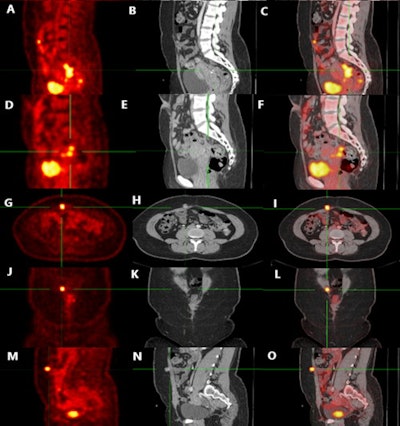 A 48-year-old female patient with a history of surgically treated colon cancer. Follow-up F-18 FDG PET/CT scanning (images A-F) revealed metabolic and morphologic regression of the previously noted nodular lesion in the recto-uterine pouch encroaching on the thickened rectal wall, with an SUVmax of 10.5 compared to 16.7. Other FDG-avid lesions (images G-O) beneath and within the anterior abdominal wall (currently measuring about 1.0 cm vs. 1.7 cm, with an SUVmax of 2.8 vs. 11.2). Image and caption courtesy of the Egyptian Journal of Radiology and Nuclear Medicine through CC BY 4.0.
A 48-year-old female patient with a history of surgically treated colon cancer. Follow-up F-18 FDG PET/CT scanning (images A-F) revealed metabolic and morphologic regression of the previously noted nodular lesion in the recto-uterine pouch encroaching on the thickened rectal wall, with an SUVmax of 10.5 compared to 16.7. Other FDG-avid lesions (images G-O) beneath and within the anterior abdominal wall (currently measuring about 1.0 cm vs. 1.7 cm, with an SUVmax of 2.8 vs. 11.2). Image and caption courtesy of the Egyptian Journal of Radiology and Nuclear Medicine through CC BY 4.0.Overall, F-18 FDG-PET identified either stable metabolic disease or a partial response in more than half of the patients (58.2%) and complete response or progressive disease in 41.8% of patients. Moreover, they noted a substantially higher complete response rate in metachronous disease versus synchronous disease (31.8% vs. 8.5% patients, p = 0.015), according to the results.
"To our knowledge, this study is one of the first to compare therapy responses between metachronous and synchronous metastatic CRC," the group noted.
Ultimately, because metabolic changes always come before anatomical changes, F-18 FDG-PET/CT could offer higher efficiency for assessing treatment outcomes than standard CT, according to the authors. The approach in patients with colorectal cancer could allow clinicians to detect responses much faster and perhaps avoid extra treatments and unnecessary side effects, they wrote.
Yet further research is warranted, the authors noted.
"Further F-18 FDG-PET/CT imaging studies to compare therapy response in synchronous and metachronous disease are advised, as the available data are lacking and the number of studies is insufficient," Nasr and colleagues recommended.






